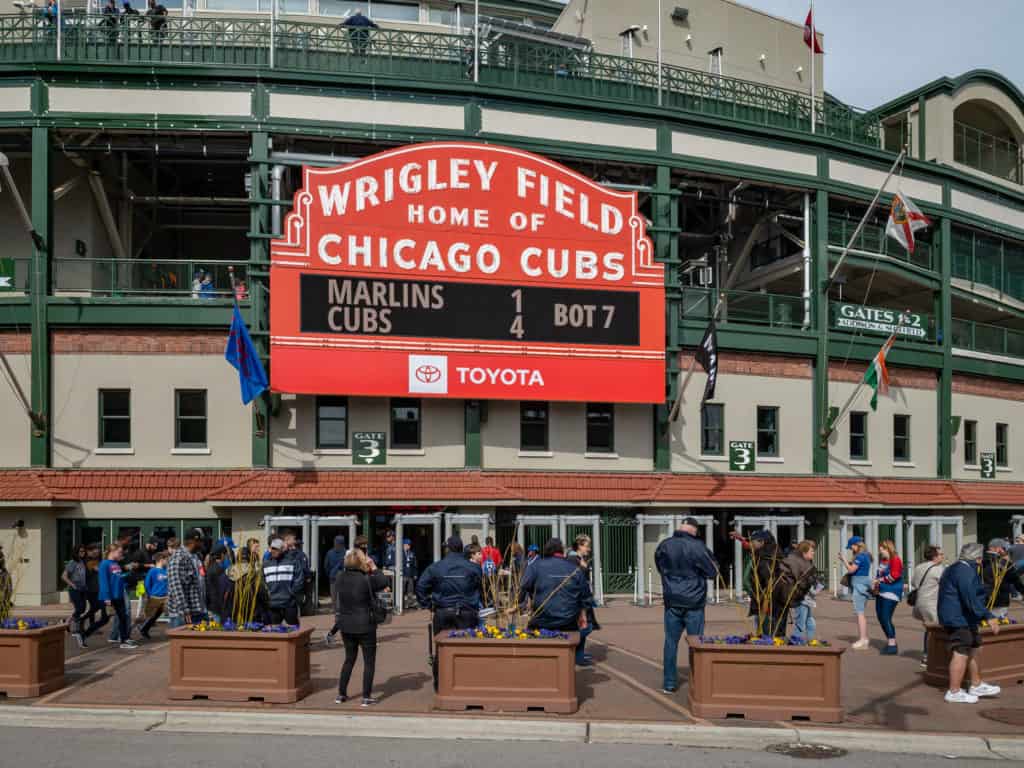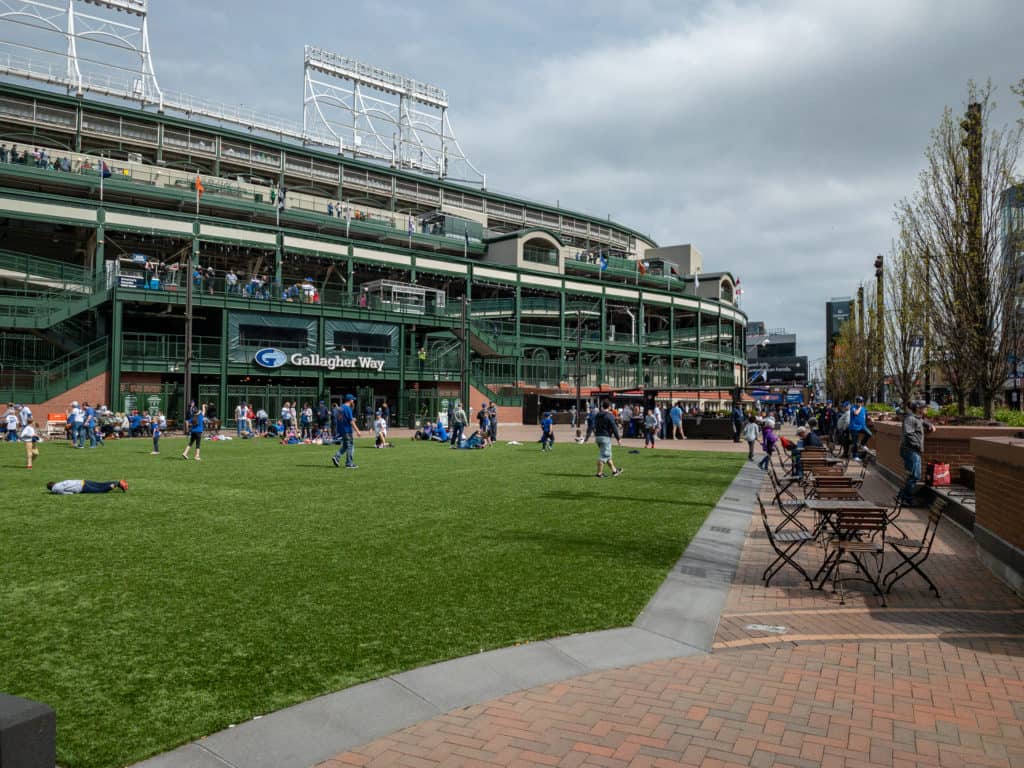Wrigley Field is without a doubt one of the world’s great, iconic ballparks. Located on the north side of Chicago, not far from beautiful Lake Michigan, Wrigley Field has been home to the Chicago Cubs of Major League Baseball since 1916. This beloved ballpark has seen its fair share of legendary players, unforgettable moments, and dramatic games over the past century—and it’s still going strong today. Whether you’re able to attend an actual Cubs game, or prefer to explore the ballpark via a behind-the-scenes tour, experiencing this legendary facility in all its historic glory is well worth the time and effort.
Wrigley Field History and Background Information
When it first opened in 1914, Wrigley Field was known as Weeghman Park—and it wasn’t home to the Cubs, it was the playing ground of a Federal League team called the Chicago Whales! The Cubs would move into Weeghman Park in 1916, and eventually, after the Wrigley family (of chewing-gum fame) bought the team, the facility would be renamed Wrigley Field in 1927. Though the Cubs would largely struggle on the field—slogging through an infamous 108-year-long drought between championships—Wrigley would come to be nearly universally loved by fans. Its inviting setting and fun atmosphere would in time earn it the nickname, “The Friendly Confines.”
Today Wrigley Field and its surrounding neighborhood are in the midst of a multi-year transformation. Wrigley Field itself is being extensively renovated—to ensure that its charms and history can survive to enchant baseball fans for generations to come—and the surrounding neighborhood is the site of a tremendous amount of new investment, development, and change. In the meantime, Wrigley continues as home of the Cubs and host to a variety of special events and concerts throughout the year.
What’s at Wrigley Field
Attending a Cubs game at Wrigley Field is a rite of passage for Chicago residents and visitors alike. However, visitors who want to experience the ins-and-outs of historic Wrigley Field when there is not a game in progress should consider taking a tour. When considering a tour of Wrigley Field, be advised that you have several exciting options. The different tours of Wrigley Field available include gameday daily tours, non-gameday daily tours, and non-gameday Ivy tours
Daily tours that take place on gamedays will provide visitors with access to Wrigley’s lower seating bowl, upper deck, and bleachers—plus you’ll even be able to walk on the hallowed field itself! This tour usually lasts approximately 75-90 minutes and costs approximately $25 per person.
Non-gameday daily tours will also get you to Wrigley’s lower seating bowl, bleachers, and field—but you’ll also be provided access to Wrigley’s press box (where legends like Harry Caray and Jack Brickhouse once worked), the visitors’ clubhouse, and the actual Chicago Cubs dugout! Non-gameday daily tours also usually last anywhere from 75 to 90 minutes, and run about $25 per person.
Last but not least, if you want to get up close and personal with Wrigley Field’s famed, ivy-covered outfield wall, you’ll need to take a non-gameday Ivy tour. This guided tour will take you everywhere that the non-gameday daily tour does, but you’ll also have time to snap that keepsake photograph of you and/or your loved ones posing in front of the ivy wall. The non-gameday Ivy tour runs roughly 75-90 minutes, but costs around $35 per person.
The daily schedule for—and availability of—these exciting tour options varies from day to day, so you’ll need to visit the official website of the Chicago Cubs for the most up-to-date listing of available tours. You may purchase tour tickets on the day you desire to tour the ballpark, but given the popularity of Wrigley Field tours, it’s highly recommended you purchase your tickets in advance of your visit. It’s also a good idea to arrive 10-15 minutes ahead of your tour’s scheduled departure time; the check-in site for all daily tours the Gallagher Way Gate, which is located on the west side of Wrigley Field.
Tips for Visiting Wrigley Field
- For those groups or families visiting Chicago with small children, please keep in mind that kids under the age of 2 years old do not need a ticket to enter Wrigley Field.
- Wrigley Field tours take place regardless of the weather, rain or shine—so keep that in mind as you plan your outing. Given Wrigley’s proximity to Lake Michigan, it can get quite cold at the ballpark early in the baseball season (March through May).
- If you’re traveling as part of a larger group—or just feeling particularly ambitious—please note that private VIP tours of Wrigley Field may also be arranged. There’s even a version of this VIP tour that can be conducted with a former Cubs player joining your group to reminisce about his playing days!
- If at all possible, try and take public transportation to Wrigley Field. While there are a few parking lots scattered throughout the neighborhood around Wrigley, there aren’t that many—and they’re pretty pricey. Fortunately, you can get to Wrigley via CTA buses and/or trains, PACE shuttle buses, and/or Metra trains.
- Several different accessibility services are offered at Wrigley. Service dogs are permitted on the property, and complimentary wheelchair service is offered to visitors on a first-come, first-served basis. Small children requiring a protective sensory kit may request one from the Wrigley Field Fan Services Booth.


